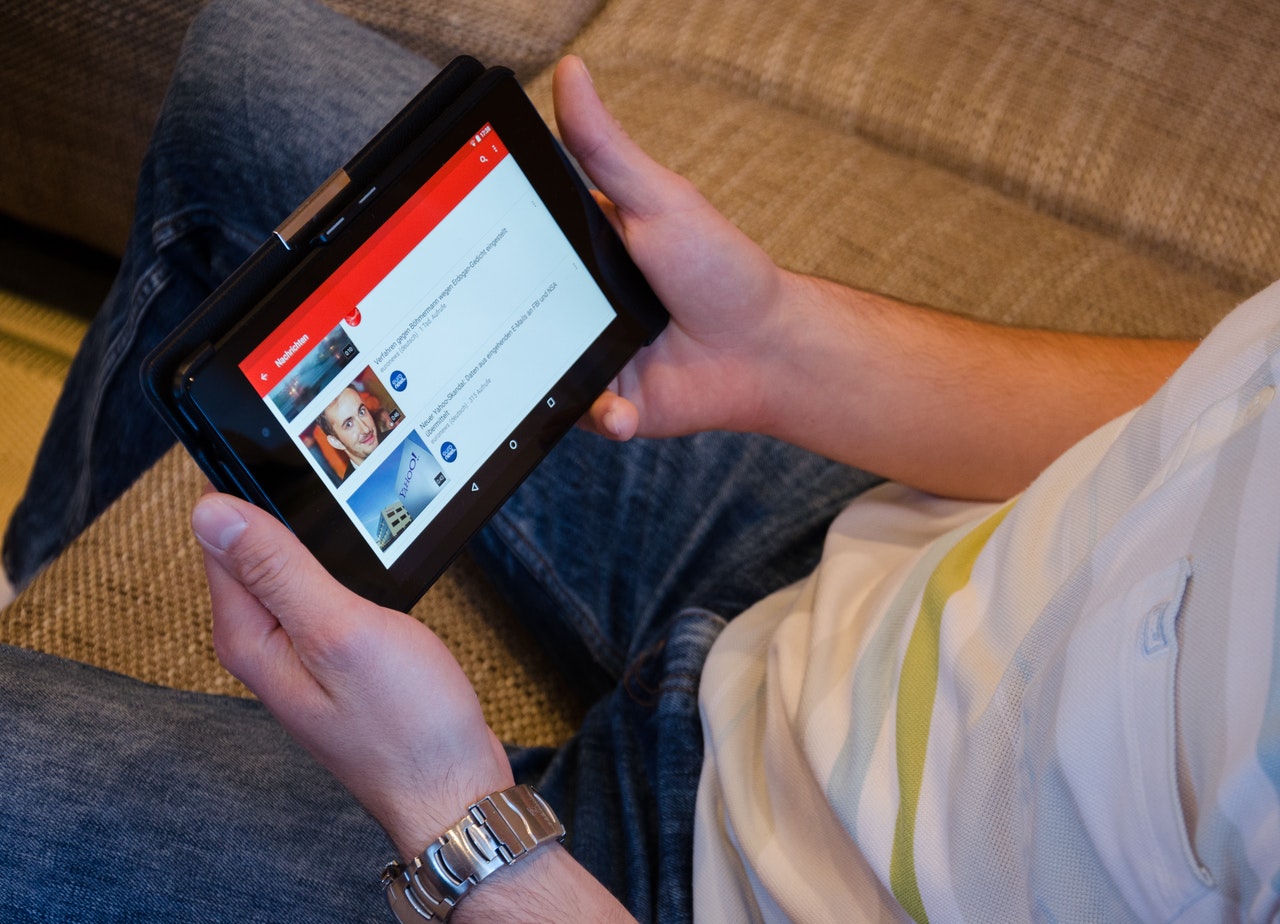You can make good money by building creative masterpieces for your clients. However, there will be times when you can’t find any new clients, and the project pipeline has run dry, which leads to a loss of revenue.
Fortunately, there are other ways to earn extra money online, even if your usual sources of income don’t make you enough money at the moment. YouTube affiliate marketing is one of the most intriguing ways to generate passive income. Let’s talk about how you can use YouTube for your affiliate marketing campaigns.
What is YouTube Affiliate Marketing?
Before we dive into the details, we need to clear up what YouTube affiliate marketing is. Contrary to what you might be thinking, YouTube doesn’t have a dedicated affiliate marketing program, unlike eCommerce platforms such as Amazon. Instead, YouTube affiliate marketing leverages the platform’s popularity to promote affiliate links to product or service pages.
Using YouTube to perform affiliate marketing doesn’t differ much from using other platforms, such as blogs. By adding affiliate links to the video description, mentioning the products, and reminding your viewers to click on the affiliate link, you can direct traffic to the product sales page and earn a substantial commission for each purchase.
Let’s look at an example of YouTube being used as an affiliate marketing platform:
 Source: Digital Trends on YouTube
Source: Digital Trends on YouTube
In the video above, the Digital Trends’ YouTube host is comparing two OLED TVs to see which is best from a quality and price standpoint. As soon as the host answers a consumer’s questions, they’d just have to click on those affiliate links below to make a purchase. For every purchase made by consumers, Digital Trends receives a commission.
How Can Creatives Use YouTube for Affiliate Marketing?
We’ve seen how YouTube affiliate marketing works. But how do you get started with affiliate marketing in the first place? Let’s look at how successful affiliate marketers do it on YouTube.
1. Create a List of Relevant Affiliate Products
Before you start making videos to promote your affiliate links, you must figure out the products you’re going to sell. To be an effective affiliate marketer, you need to promote products that you can personally vouch for. In other words, you should have already used those products yourself.
What products do creatives like you use?
It depends on the type of content you create. If you’re a designer, it could be a design software or plugin. If you’re a painter, you can promote paintbrushes or pigments. If you’re a photographer, you can review and promote cameras and photography equipment. Photographer Nicole Glass does exactly that on her YouTube channel:

Source: Nicole Glass on YouTube
Nicole Glass runs one of the fastest-growing photography channels. She has more than 33 thousand subscribers and 2 million views. Aside from promoting products that she reviews, she also promotes her go-to gear in all of her videos. These efforts enable her to generate passive income from affiliate marketing:

The beauty of YouTube affiliate marketing is that you can promote as many products as you want, provided that you don’t go over the limit of 5,000 words. However, keeping track of all your conversions can be pretty tricky, so you might want to look into using an affiliate dashboard to help you find out which products are worth promoting and which ones you should drop.
2. Identify and Sign Up For Affiliate Programs
Once you’re done figuring out the kind of products you want to promote, the next thing to do is to find a suitable affiliate program and get signed up. The Amazon Associates program is, perhaps, the most popular one out there.
However, the recent decision by Amazon to slash its commission rates across all of its product categories, coupled with its 24-hour cookie policy (more on this later), many experienced affiliates have transferred to its competitors such as eBay (with its Partner Network), Overstock, Walmart, and Microsoft.
There are also affiliate programs that cater to creatives. Brands such as Adobe, On1, Skylum Software, B&H, and Capture One have great affiliate programs for photographers. On the other hand, Fine Art America, Paint By Numbers, Society 6, and Arteza have affiliate programs for designers.
When you choose your affiliate program, pay attention to the commissions you’d get for every product sold. In addition, you need to choose one with a long cookie life, which is the period during which you are eligible to receive commissions for purchases. Most affiliate programs have an average cookie lifespan of 30 days, which makes Amazon’s cookie life look like a mayfly in comparison.
3. Create Engaging Content
Once you’ve picked your affiliate program, it’s time to create engaging content. You need to generate good content to attract audience traffic and convince viewers to click on your affiliate links.
There are many ways to engage your audience through your content. For example, you can identify a familiar pain point users have with the product you’re trying to promote. Is it confusing to use or set up? Are people unsure about its specifications? You can use those questions as your starting points.
Greg Gottfried, a graphic designer, for example, usually starts his spiel with a question he believes his audience would like to hear the answer to. He then summarizes what he plans to discuss in his video without delving into the details.

Source: Greg Gottfried on YouTube
Before you can even think of selling anything through your YouTube channel, you must first create value for your viewers. Once you establish yourself as a credible source of information, you can then start promoting affiliate links.
Have a Good Mix of Topics
Your videos don’t have to be always about the products you’re trying to sell. Sure, you can create product reviews and product comparisons. However, if you keep publishing the same types of videos, they’re likely to lose interest in your channel over time. Creating videos on different topics within your niche will keep your audience engaged.
For instance, Frederik Trovatten, a street photographer, uses a mixture of tutorials, street photography, and product reviews to sell affiliate products on his YouTube channel:

Source: Frederik Trovatten on YouTube
He includes affiliate links in all those videos. Here’s how he showcases those on a video on his work in Mexico:

Source: Frederik Trovatten on YouTube
You can create as many types of videos as you want, as long as you see your audience engaging with them. The affiliate products you’re selling, after all, don’t have to hog the camera for hours. Even if they appear for a few seconds on the video, you can still promote them through your affiliate links.
However, you really need to ensure that you actually use those products. People will know if you’re promoting affiliate products for the commissions alone, not because you believe they’re worth your audience’s money.
Drive Traffic to Your Channel
Now it’s time to get that traffic to your YouTube channel. All your hard work, after all, will be for nothing if no one sees those videos and your affiliate links.
So, how do you make them see those?
There are many ways you can do this.
If you have your small business website, you can promote your YouTube channel there. Artist Vicki Boutin, for instance, prominently displays a YouTube icon linked to her channel on her homepage. She also has her other social media platforms like Instagram for which she edits engaging photos from her Youtube videos, all linked to her website:

Source: Vicki Boutin
You can also promote your YouTube channel on your social media platforms. Over 3.78 billion people use social media. If you manage to get just 0.01% of those users to click “Subscribe”, you’d have reached 378,000 people, which is already a decent number of subscribers for a creative-centric channel.
In Closing
YouTube affiliate marketing is a great way to generate passive income. With YouTube affiliate marketing, creatives like you can earn extra income by adding links to a third party’s products. When you promote products that you’re already familiar with, it won’t be too difficult for you to persuade your viewers to click on your affiliate links so you can earn commissions.
However, YouTube affiliate marketing is more than just adding affiliate links to your video descriptions. You need to create a list of products you can promote, including products that you review and those you regularly use, then sign up for affiliate programs that give your viewers access to these products.
You also need to create good content to generate traffic. Your content should be engaging and address common customer questions. It’s also a good idea to publish different types of videos so your viewers won’t quickly get tired of your content. Finally, you need to drive traffic to your channel through your website or social media accounts.
Doing YouTube affiliate marketing the right way will allow you to earn passive income and let you continue following your passion.
Bio

Domingo Karsten, one of the early investors in WeCanTrack, has been in the online marketing industry for over 10 years. His writing has been featured in Fast Company, among others. Follow him on Twitter at @domingokarsten.

